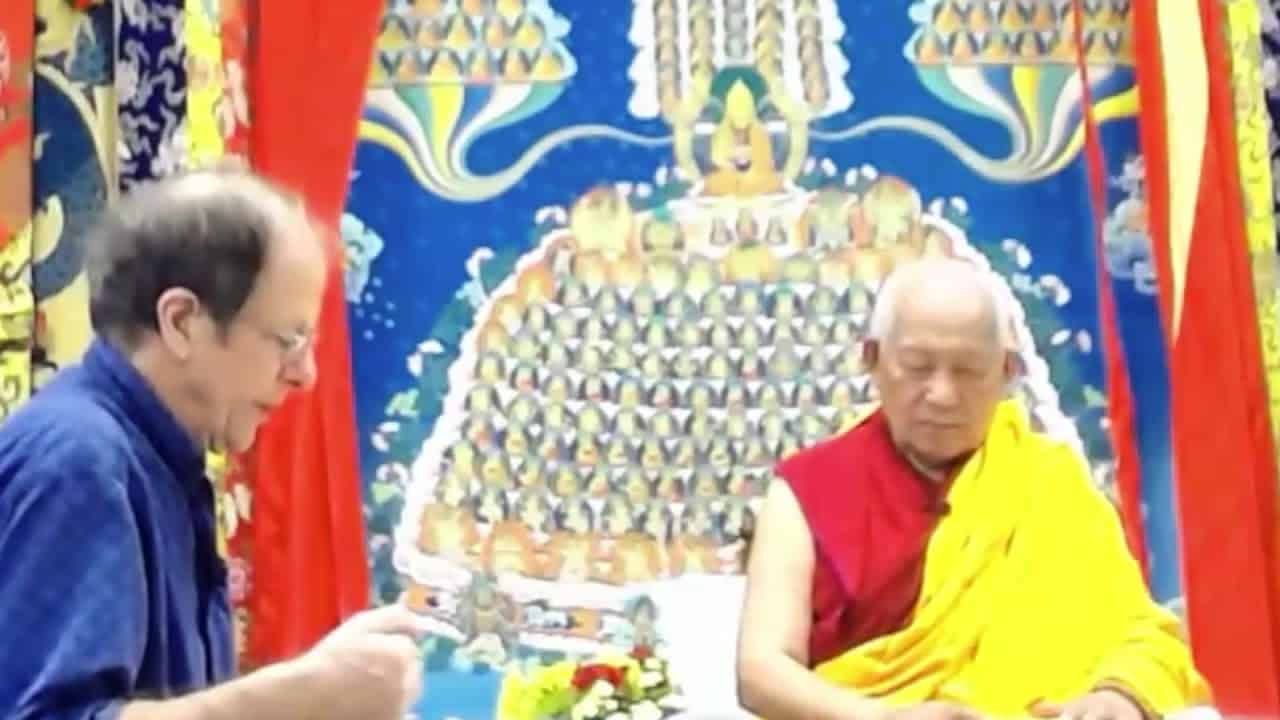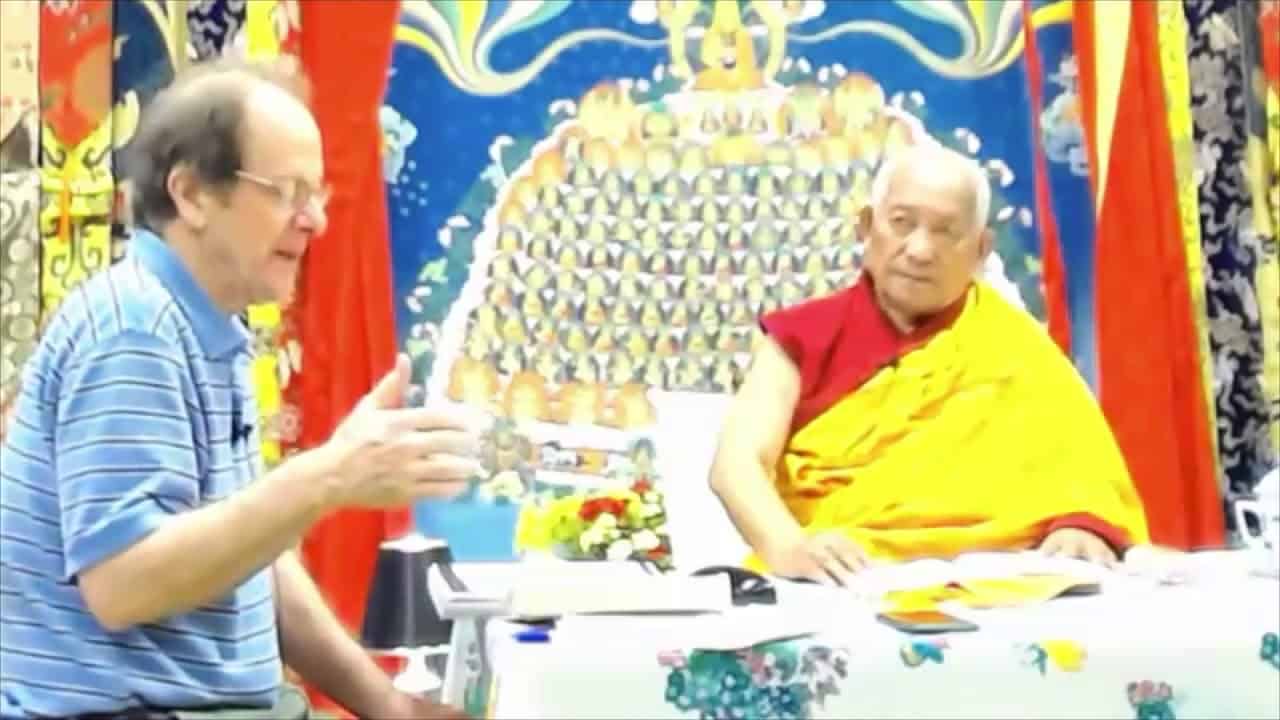Chapter 13: Verses 307-310
Part of a series of teachings on Aryadeva's 400 Stanzas on the Middle Way given on an annual basis at Sravasti Abbey by Geshe Yeshe Thabkhe beginning in 2013.
Motivation from Je Tsongkhapa’s Three Principal Aspects of the Path
The essence of all the Conqueror’s teaching,
The Path extolled by the Exalted Conqueror’s sons,
And the point of entry for fortunate seekers of liberation,
To the best of my ability, I will explain these.
- Refuting the inherent existence of a visual object by examining if its color and shape are inherently one or different
- Refutation by examining if a visual form and the four elements which are its causes are inherently one or different
- Do the four elements and visible forms exist inherently? Are they inherently different and totally unrelated?
- Refutation of Vaisheshika’s contention that a pot is visible since it possesses visibility
Geshe Yeshe Thabkhe
Geshe Yeshe Thabkhe was born in 1930 in Lhokha, Central Tibet and became a monk at the age of 13. After completing his studies at Drepung Loseling Monastery in 1969, he was awarded Geshe Lharampa, the highest degree in the Geluk School of Tibetan Buddhism. He is an emeritus professor at the Central Institute of Higher Tibetan Studies and an eminent scholar of both Madhyamaka and Indian Buddhist studies. His works include Hindi translations of The Essence of Good Explanation of Definitive and Interpretable Meanings by Lama Tsongkhapa and Kamalasila's commentary on the Rice Seedling Sutra. His own commentary, The Rice Seedling Sutra: Buddha’s Teachings on Dependent Arising, was translated into English by Joshua and Diana Cutler and published by Wisdom Publications. Geshela has facilitated many research works, such as a complete translation of Tsongkhapa’s The Great Treatise on the Stages of the Path to Enlightenment, a major project undertaken by the Tibetan Buddhist Learning Center in New Jersey where he teaches regularly.


